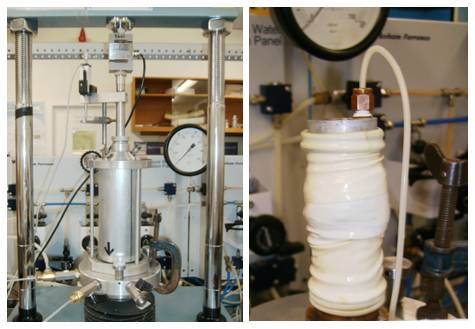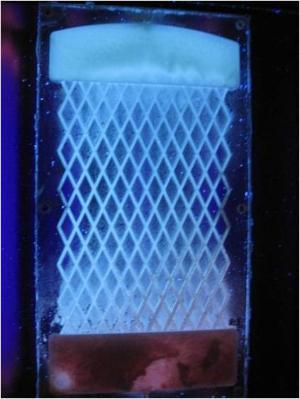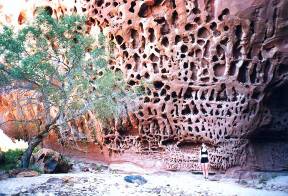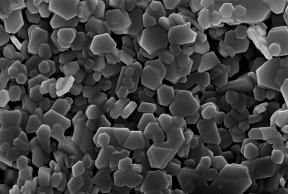Civil & Environmental Engineering
Hydro-mechanical behaviour of Geomaterials
Our geomechanics research is focused on the hydro-mechanical behaviour of geomaterials across a wide range of scales, including:
- microscale (grain or aggregate level)
- mesoscale (‘continuum’ level)
- macroscale (geotechnical, and geological systems)
Our research areas
Hydro-mechanical behaviour of unsaturated porous media

We have expertise in both the experimental testing and constitutive modelling of the hydraulic and mechanical behaviour of three phase porous materials. Currently efforts are being made to develop procedures for deriving unsaturated soil parameters with a minimum of "expensive" testing techniques so that they can be incorporated into more routine engineering practice. The photographs are of a triaxial test of a compacted silt carried out under suction controlled conditions.
Investigation of clay microstructure
Increasingly clay microstructure has been linked with the hydraulic & mechanical behaviour of soils at meso and macro scales.
This research is carried out using both qualitative and quantitative techniques including SEM, ESEM and MIP. The ESEM image presented here illustrates the open metastable microstructure commonly observed in collapsible soils.
Chemical & biological improvement of geomaterials
We’re carrying out research to investigate new chemical and biological techniques for improving the behaviour of geomaterials, including:
- biomineralisation processes for sealing rock fractures
- the use of colloidal silcia to reduce permeability in porous media
- a range of chemical grouts to seal desiccation induced cracking in silts and clays

This figure illustrates an artificial network which has been sealed in the laboratory using microbially induced calcite precipitation (under UV light calcite fluoresces).
Constitutive & numerical modelling of soft soils
There's an increasing need to build on soft soils due to population pressures and urbanisation.
Research is currently being undertaken at Strathclyde to develop constitutive models for use within finite element analysis software that captures the fundamental behaviour of soft, natural soils. These models consider effects such as anisotropy, bonding, creep and destruction and are comprehensively validated against extensive laboratory data.
Chemomechanics & cracking in geomaterials
Cracking in geomaterials (including building materials) is often the mechanical response of the host rock to a chemical reaction. Examples are salt or ice crystallisation in stone or brick, barium sulphate formation in oil wells, ettringite formation in cement/concrete, corrosion of rebars in concrete structures and expansion of swelling clay aggregates in cement renders.
Our work focuses on quantitatively understanding and tailoring the chemical reaction to alter resulting mechanical impact. Using a combination of nanoscale techniques (atomic force microscopy and energy dispersive synchrotron X-ray diffraction) we measure interaction forces between minerals in aqueous solution and atomic level strain in rocks as salt/ice crystals form in the pores.
We aim to find solutions to surface cracking that are able to be retro-fitted on buildings/structures. We also work on manufacture and colloid stability of calcium hydroxide and hydroxyl-apatite nanoparticles for remediation of limestone and bone.


Photographs show tafoni created by salt weathering in rock outcrop (Dr Eric Doehne, Getty Conservation Institute). Second image is a scanning electron micrograph of calcium hydroxide nanoparticles. Scale bar is 1 micron.
Our current projects
"Influence of Desiccation Cracks on Mechanical and Hydrophobic Properties of Soil" - Alvis Atique (PhD student) Prof Minna Karstunen (Supervisor)
"Development of chemical and biological grouts for fine aperture fractures" - Erica MacLachlan (PhD student) Prof Rebecca Lunn & Prof Zoe Shipton (Supervisors)
"Cracking behaviour of unsaturated clay materials" - Ian Murray (PhD student) Prof Alessandro Tarantino & Prof Rebecca Lunn (Supervisors)
"Experimental characterisation of hydro-mechanical behaviour of unsaturated soils" - Matteo Pedrotti (Phd Student) Prof Alessandro Tarantino & Dr Stella Pytharouli (Supervisors)
"Investigation into the erosion of bentonite from nuclear waste repositories using ERT as a monitoring technique" - Christopher Reid (PhD student) Prof Alessandro Tarantino & Prof Rebecca Lunn (Supervisors)
"Bubble surface model for cyclic loading of clay" - Nallathamby Sivasithamparam (PhD student) Prof Minna Karstunen (Supervisor)
"Development of a cyclic overlay model for utilisation in numerical analyses of offshore and onshore turbine foundations" - (PhD student) Prof Minna Karstunen & Dr Stella Pytharouli (Supervisors)
"Smouldering combustion: A novel remediation process and its effects on soil properties and its influence of the soil engineering properties" - Stephanie Zihms (PhD student) Dr Christine Switzer & Prof Minna Karstunen (Supervisors)
"Controlling deterioration of contaminated storage structures" - Dr Andrea Hamilton (supervisor)
"Intelligent design for sustainable infrastructure" - Dr Andrea Hamilton (supervisor), Dr Grainne El Mountassir and Dr Mohamed Saafi (co-supervisors)